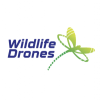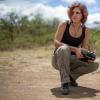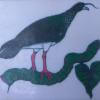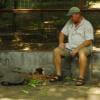In recent years, drone technologies have been explored for a range of applications in conservation including (but not limited to) mapping, biodiversity inventories, antipoaching patrols, wildlife tracking, and fire monitoring. The rise of customizable, open-source drones like those of ArduPilot and OpenROV hold promise for more effective conservation applications, and combined with other monitoring sensors and devices, they are capable of collecting high-resolution data quickly, noninvasively, and at relatively low cost.
However, challenges remain in putting these tools to use. A recent paper reviewing 256 conservation drone projects highlighted some of these major obstacles, ranging from unintended social and ecological consequences of drone operations to still prohibitive costs, both in terms of hardware and in terms of storing and processing large volumes of data. The longstanding challenge of power/battery life remains as well.
If you're considering trying out drones for yourself, and want to explore the possibilities and understand the major conversations happening around this technology, check out these beginner's resources and conversations from across the WILDLABS platform:
Three Resources for Beginners:
- Conservation Technology User Guidelines Issue 5: Drones, World Wildlife Fund | Drones, best practices, ethics, regulations, case studies
- WILDLABS Virtual Meetup Recording: Drones, Craig Elder, Dr. Claire Burke, and Gabriel Levin | Drones, thermal camera, wildlife crime, ML, biologging
- New Paper: Drones and Bornean Orangutan Distribution, Sol Milne | Drones, data analysis, citizen science, community science, primates
Three Forum Threads for Beginners:
- Curious about radio-tracking with drones? | Wildlife Drones, Biologging (5 replies)
- Drones for GIS Best practice Document | Adrian Hughes, Drones (10 replies)
- WWF Conservation Technology Series: Drones in Conservation | Aurélie Shapiro, Drones (7 replies)
Three Tutorials for Beginners:
- How do I use a drone to capture radio-tracking data? | Debbie Saunders, Tech Tutors
- How do I choose the right drone for my conservation goals? | Shashank Srinivasan, Tech Tutors
- How do I strategically allocate drones for conservation? | Elizabeth Bondi, Tech Tutors
Want to know more about using drones, and learn from experts in the WILDLABS community? Make sure you join the conversation in our Drones group!
*Header photo: Parker Levinson, Point Blue Conservation Science
- 0 Resources
- 0 Discussions
- 8 Groups
- 0 Resources
- 0 Discussions
- 9 Groups
- @jennamkline
- | She/Her
PhD Student @ tOSU, Autonomous Drones for Collective Animal Behavior Studies
- 0 Resources
- 0 Discussions
- 4 Groups
- @Mathilde
- | she/her
Natural Solutions
Engineer, I work for a web development company on web application projects for biodiversity conservation. I'm especially interested by camera traps, teledetection and DeepLearning subjects.
- 0 Resources
- 0 Discussions
- 11 Groups
Max Planck Institute of Animal Behavior (MPI-AB), Technical University of Munich (TUM)
Behavioral Ecologist
- 0 Resources
- 1 Discussions
- 14 Groups
Systems Engineer and Zoologist
- 0 Resources
- 0 Discussions
- 3 Groups
An environmentalist and biologist who has been working to inspire and prepare the next generation of conservationists through an inclusive and engaging learning environment.
- 1 Resources
- 0 Discussions
- 8 Groups
Wildlife Drones
Wildlife Drones has developed the world’s most innovative radio animal-tracking system using drones so you can track your radio-tagged animals like never before.


- 15 Resources
- 8 Discussions
- 32 Groups
International Union for the Conservation of Nature (IUCN)
Key Biodiversity Areas Programme Officer, IUCN



- 0 Resources
- 89 Discussions
- 8 Groups
British Antarctic Survey (BAS)
Machine learning researcher at the British Antarctic Survey
- 0 Resources
- 0 Discussions
- 5 Groups
Assiniboine Park Conservancy
- 0 Resources
- 6 Discussions
- 3 Groups
I am geographer who is interested on mapping, GIS , biodiversity and communities.
- 0 Resources
- 0 Discussions
- 1 Groups
Join us in celebrating this year’s Community Choice Award winners!
15 August 2024
Vote for your favorite submissions that best demonstrate conservation impact, novel innovation/discovery, and strong storytelling of the work and the sector.
12 August 2024
The use of drones can contribute in various ways to increase the effectiveness of monitoring, reduce costs, and minimize disturbances. This manual has been specifically developed to support conservation efforts and to...
27 June 2024
WILDLABS is partnering with FLIR to give away a FLIR ONE Edge Pro to 5 community members.
26 June 2024
Wildlife Drones was deployed by Zoos Victoria in a trial project tracking captive-bred Eastern Barred Bandicoots that were tagged and released into the wild
14 June 2024
Come and do the first research into responsible AI for biodiversity monitoring, developing ways to ensure these AIs are safe, unbiased and accountable.
11 June 2024
WildLabs will soon launch a 'Funding and Finance' group. What would be your wish list for such a group? Would you be interested in co-managing or otherwise helping out?
5 June 2024
Now accepting applications for two $15,000 grants to help protect wildlife through cutting-edge, technology-driven efforts
3 June 2024
Do you have photos and videos of your conservation tech work? We want to include them in a conservation technology showcase video
17 May 2024
Save the Elephants is seeking a Principal Investigator for our Elephant Collective Behaviour Project. This role will spearhead research initiatives using cutting-edge video analysis tools to study elephant group...
1 May 2024
Article
Read in detail about how to use The Inventory, our new living directory of conservation technology tools, organisations, and R&D projects.
1 May 2024
Article
The Inventory is your one-stop shop for conservation technology tools, organisations, and R&D projects. Start contributing to it now!
1 May 2024
September 2024
event
December 2023
event
31 Products
Recently updated products
| Description | Activity | Replies | Groups | Updated |
|---|---|---|---|---|
| Thanks, I grabbed those datasets already. I know about that website, put couldn't quite make sense of it. It says 'open repository', but then there is a login page with no way to... |
|
AI for Conservation, Open Source Solutions, Protected Area Management Tools, Drones, Remote Sensing & GIS | 1 day 14 hours ago | |
| RealityCapture is now free to use for students, educators, and hobbyists and for companies making less than $1 million USD/year.Best regards!Steffen |
|
Drones | 1 week ago | |
| Hi Nilaksha,maybe this is interesting too 😉 My free manual 'Drones in Biomonitoring' - https://doi.org/10.5281/zenodo.8077113 can help to get (more) knowledge how to proceed... |
+7
|
Drones | 1 week ago | |
| Ah, and perhaps have a look at conservationdrone.org 😉 |
+7
|
Drones, Human-Wildlife Conflict | 1 week ago | |
| Hi all,maybe it helps 😉 My free manual 'Drones in Biomonitoring' - https://doi.org/10.5281/zenodo.8077113 can help to get (more) knowledge how to proceed easily and successfully... |
|
Drones, Marine Conservation, Wildlife Crime | 1 week ago | |
| Hi all,maybe it helps 😉 My free manual 'Drones in Biomonitoring' - https://doi.org/10.5281/zenodo.8077113 can help to get (more) knowledge how to proceed easily and successfully... |
+2
|
Drones | 6 days 20 hours ago | |
| Great!!! |
+32
|
AI for Conservation, Drones, Emerging Tech, Human-Wildlife Conflict, Wildlife Crime | 2 weeks 2 days ago | |
| Thank you for elaborating, @evebohnett ! And for the heads ups! |
+22
|
Camera Traps, Drones | 3 months 1 week ago | |
| We will be conducting in-person demos of our cutting-edge drone technology in the US this year! 🇺🇸 If you're interested in experiencing... |
|
Biologging, Drones, Remote Sensing & GIS, Software and Mobile Apps | 6 months ago | |
| Hi Danilo. you seem very passionate about this initiative which is a good start.It is an interesting coincidence that I am starting another project for the coral reefs in the... |
|
Acoustics, AI for Conservation, Biologging, Camera Traps, Citizen Science, Climate Change, Community Base, Connectivity, Drones, Emerging Tech, Human-Wildlife Conflict, Open Source Solutions, Sensors, Software and Mobile Apps, Wildlife Crime | 6 months 2 weeks ago | |
| Forgot to mention this wildlife drone group - |
|
Drones, eDNA & Genomics | 6 months 2 weeks ago | |
| Hi, I have used a commercial company for drone work for my PhD and they were willing to give me a significant discount for research purposes. One thing to consider is that in SA a... |
+2
|
Drones, East Africa Community | 6 months 2 weeks ago |
Western Section of The Wildlife Society 2023
25 January 2023 2:09am
Interview for Technologies in Conservation
24 November 2022 10:07am
16 January 2023 5:16pm
Happy to contribute [email protected]
17 January 2023 5:12pm
My original background is in ecology and conservation, and am now in the elected leadership of the Gathering for Open Science Hardware which convenes researchers developing open source tech for science. I am not working on a specific piece of technology right now, but am happy to contribute some higher-level views for your interview if that helps.
International Congress for Conservation Biology
16 January 2023 2:53pm
Conservation Technology Intern (Vietnam)
11 January 2023 5:00pm
Crowdfunding Aerial Baseline Study of Ghost Gear in Koh Phangan, Thailand
18 December 2022 11:06am
We are developing a project in Thailand, using drones to locate lost & discarded fishing gear across Koh Phangan, Thailand.
We're 86% there & only need $1500 to get us over the line. If you can help us, we would really appreciate it!
This project uses drones to create a baseline survey of lost fishing gear & document effects of entanglement on marine species.
We are working with Core Sea & Koh Phangan Sea Guardians to develop a locally led method for ongoing monitoring for discarded fishing gear, using drones.
Thank you, Sol, Tania & Kat
12 PhD Positions - WildDrone
1 December 2022 4:45pm
Picking up signal of GPS tag
10 November 2022 11:29am
16 November 2022 10:54am
Thanks Carly! I've been in awe of what Wildlife Drones is doing, but as you say my work at the moment is focussed on existing GPS units rather than telemetry for tracking. I'll still reach out & ask though. Thanks for your help! :)
16 November 2022 10:55am
Hi Kim! Thanks for sharing, this is really interesting! I'll check out the website & see what I can find out about the mechanics of the device. Thanks again!
21 November 2022 5:25pm
Hey Sol,
The only way for you to collect information from a GPS tag attached to a FAD is if that tag transmits that data to the drone. Unfortunately most receiver packages are a bit too large for hobbyist-style drones (from what I've seen).
Depending on the range/distance from shore, you might be able to have a shore-based receiver system?
Shark Lab Data Analyst
24 October 2022 7:12pm
New conservation tech articles from Mongabay
20 October 2022 7:45pm
Conservation Technology Intern (Vietnam)
 Meredith S. Palmer
Meredith S. Palmer
19 October 2022 9:22am
Frontiers Symposium: Digital tools for reversing environmental degradation
5 October 2022 10:23am
Conservation Tech Directory - new update!
29 August 2022 2:38pm
23 September 2022 5:26pm
Congrats on the milestone Carly and Gracie!
26 September 2022 10:07pm
Thanks so much!!
Senior Conservation Technology Expert Position (Consultancy) with the Global Wildlife Program
22 September 2022 5:35pm
Collecting Critically Endangered Plants on Cliffs using a Drone
16 September 2022 7:49pm
CFP - transnational biodiversity monitoring (from European Biodiversity Partnership)
14 September 2022 1:42pm
Catch Up with the Variety Hour: September 2022
6 September 2022 12:31pm
Conservation Technology Research Internship
26 August 2022 4:58pm
Become a Scientist Pilot!
12 August 2022 5:20pm
Research Technician - Unoccupied Aircraft Systems Pilot and Geospatial Analyst
10 August 2022 10:40pm
3yr Postdoctoral Associate: Remote Sensing and Unoccupied Aircraft Systems
10 August 2022 5:29pm
Protecting endangered megafauna through AI analysis of drone images in a low-connectivity setting: a case study from Namibia
9 August 2022 5:08pm
Just sharing our latest paper in PeerJ that describes the use of drones in a low-connectivity setting to help monitor and protect megaherbivores. Please contact [email protected] for any information.Thanks everyone!
The Foes and Floes of Labelling Aerial Pictures Manually
 Whale Seeker
Whale Seeker
13 July 2022 12:43am
A Triphibian Surveillance Vehicle
9 July 2022 2:23pm
New Conservation Tech Directory update
27 June 2022 4:45pm
Cofounder needed
9 June 2022 4:23pm
17 June 2022 1:14pm
What about developing a drone conservation training course for field conservation staff teaching specific skills for specific research needs.
17 June 2022 6:54pm
How exciting @Joyeeta ! I'd love to learn more about the companies and projects you worked on, can you share more info about them?
I once chatted to an entrepreneurial advisor with a couple of my conservation tech ideas, and he said my ideas are good/impactful but don't make for a product worth millions of $$$ of turnover per year that would interest investors. So I am very curious about how you got your conservation tech businesses off the ground!
18 June 2022 8:33pm
Some folks doing work in this space - Wildlife Drones, Conservation Drones, UAV Wild, AfricanDrones, Oceans Unmanned, Geonadir.
Airships for Wildlife Management and Research
9 December 2021 7:13am
15 January 2022 6:23am
Sure! Let's chat.
15 January 2022 6:24am
Our Aircraft is certified in South Africa. And we are working with multiple Civil Aviation Authorities around the world to get flight approvals. We are open to discussing the projects in the meantime.
7 June 2022 1:04pm
Hi
I can help...I think I have a few ideas where this can work.
Thanks
Smithsonian Magazine: "Underwater Roombas" scan southern California coast for DDT barrels
4 June 2022 7:30pm































































16 January 2023 2:42pm
I'd be happy to chat with you if you wanted! My expertise is within passive acoustic monitoring particularly. The Conservation Tech Directory might be useful for you in identifying relevant actors within the space.